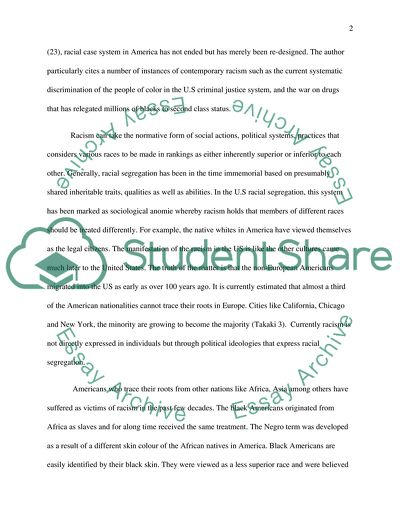Cite this document
(Where Do We Stand Today with Racism Literature review Example | Topics and Well Written Essays - 3750 words, n.d.)
Where Do We Stand Today with Racism Literature review Example | Topics and Well Written Essays - 3750 words. https://studentshare.org/history/1868354-racism-where-do-we-stand-today
Where Do We Stand Today with Racism Literature review Example | Topics and Well Written Essays - 3750 words. https://studentshare.org/history/1868354-racism-where-do-we-stand-today
(Where Do We Stand Today With Racism Literature Review Example | Topics and Well Written Essays - 3750 Words)
Where Do We Stand Today With Racism Literature Review Example | Topics and Well Written Essays - 3750 Words. https://studentshare.org/history/1868354-racism-where-do-we-stand-today.
Where Do We Stand Today With Racism Literature Review Example | Topics and Well Written Essays - 3750 Words. https://studentshare.org/history/1868354-racism-where-do-we-stand-today.
“Where Do We Stand Today With Racism Literature Review Example | Topics and Well Written Essays - 3750 Words”. https://studentshare.org/history/1868354-racism-where-do-we-stand-today.


